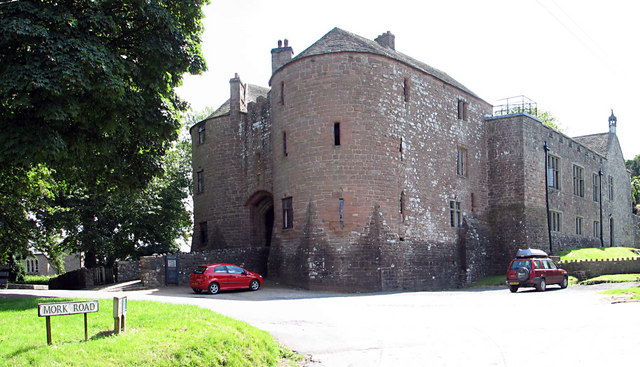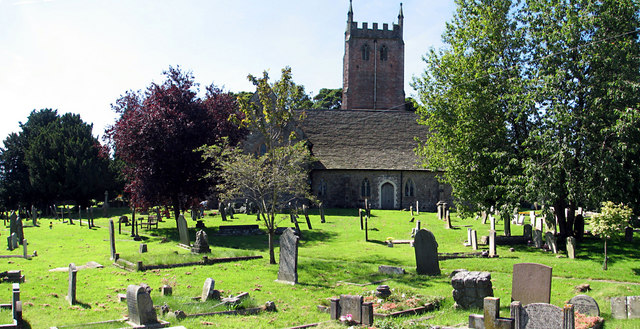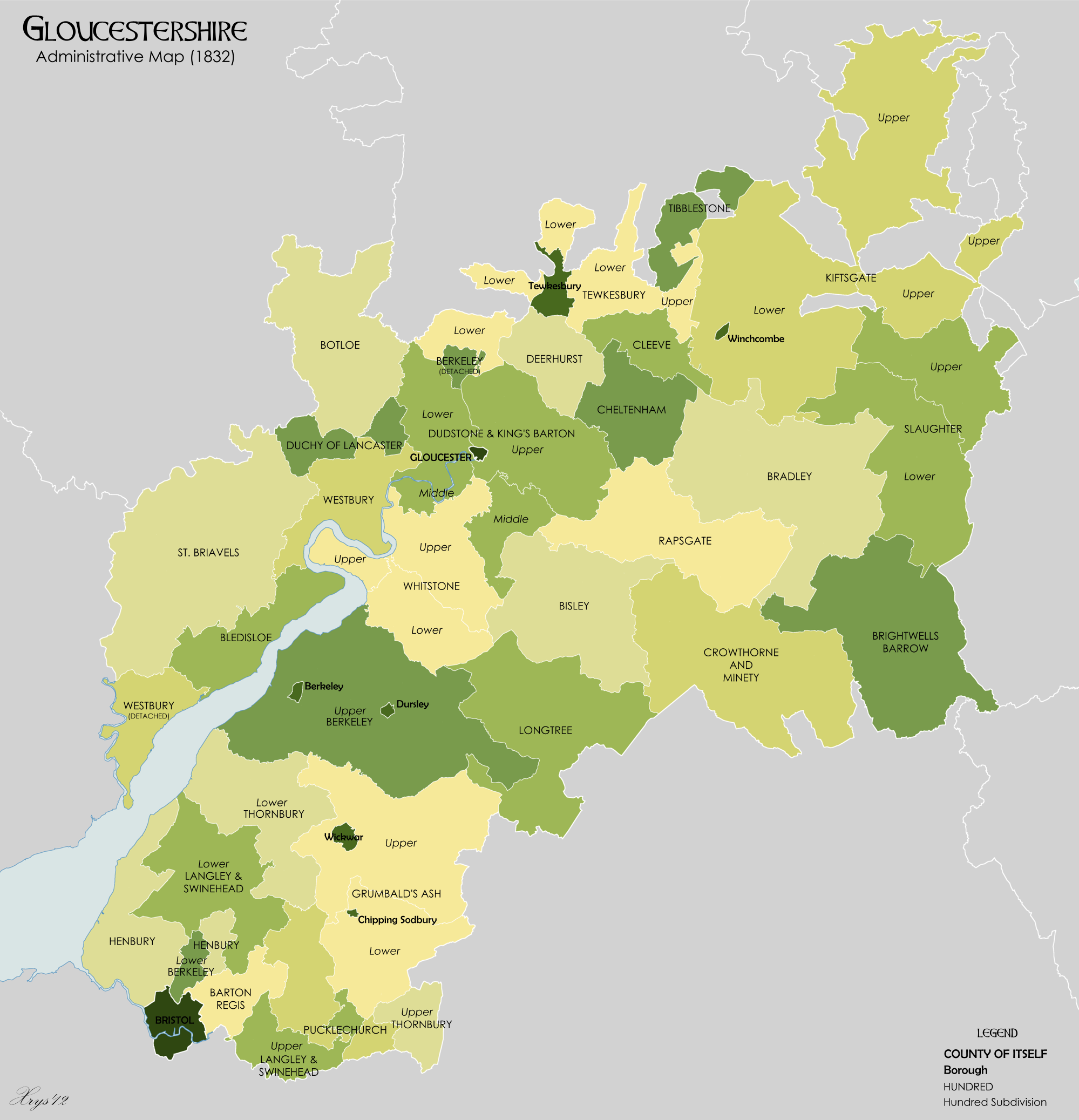|
Cantref Coch
Cantref Coch ( ) was a cantref associated with the kingdoms of Ergyng, Gwent and the later Kingdom of Glamorgan. Its area is defined as the land between the River Severn and the River Wye, with the Severn Sea as its southern border although its northern border is less certain. Cantref Coch is one of the few medieval cantrefi named by Welsh writers that is not within the modern nation of Wales. History Early History The area that would become Cantref Coch was home to native Iron working activities for sometime before the arrival of the Romans. However, it may also have been highly contested between the British Dobunni and Silures tribes, with the paucity of numismatic finds in the area suggesting that neither tribe held control for long.Miranda Aldhouse-Green and Ray Howell (eds.), ''Gwent In Prehistory and Early History: The Gwent County History Vol.1'', 2004, The Roman era would see the area pacified and become a center of religious and industrial activity, as well as ... [...More Info...] [...Related Items...] OR: [Wikipedia] [Google] [Baidu] |
Cantref
A cantref ( ; ; plural cantrefi or cantrefs; also rendered as ''cantred'') was a medieval Welsh land division, particularly important in the administration of Welsh law. Description Land in medieval Wales was divided into ''cantrefi'', which were themselves divided into smaller ''cymydau'' (commotes). The word ''cantref'' is derived from ''cant'' ("a hundred") and ''tref'' ("town" in modern Welsh, but formerly used for much smaller settlements). The ''cantref'' is thought to be the original unit, with the commotes being a later division. ''Cantrefi'' could vary considerably in size: most were divided into two or three commotes, but the largest, the ''Cantref Mawr'' (or "Great Cantref") in Ystrad Tywi (now in Carmarthenshire) was divided into seven commotes. History The antiquity of the ''cantrefi'' is demonstrated by the fact that they often mark the boundary between dialects. Some were originally kingdoms in their own right; others may have been artificial units created later. ... [...More Info...] [...Related Items...] OR: [Wikipedia] [Google] [Baidu] |
Charcoal
Charcoal is a lightweight black carbon residue produced by strongly heating wood (or other animal and plant materials) in minimal oxygen to remove all water and volatile constituents. In the traditional version of this pyrolysis process, called charcoal burning, often by forming a charcoal kiln, the heat is supplied by burning part of the starting material itself, with a limited supply of oxygen. The material can also be heated in a closed retort. Modern "charcoal" briquettes used for outdoor cooking may contain many other additives, e.g. coal. This process happens naturally when combustion is incomplete, and is sometimes used in radiocarbon dating. It also happens inadvertently while burning wood, as in a fireplace or wood stove. The visible flame in these is due to combustion of the volatile gases exuded as the wood turns into charcoal. The soot and smoke commonly given off by wood fires result from incomplete combustion of those volatiles. Charcoal burns at a higher temper ... [...More Info...] [...Related Items...] OR: [Wikipedia] [Google] [Baidu] |
Richard Blome
Richard Blome (1635-1705) was an engraver, cartographer, and publisher in the Kingdom of England The Kingdom of England (, ) was a sovereign state on the island of Great Britain from 12 July 927, when it emerged from various History of Anglo-Saxon England, Anglo-Saxon kingdoms, until 1 May 1707, when it united with Kingdom of Scotland, .... Works * 167''A Geographical Description of the Four Parts of the World'' * 1673 ''Britannia, or a Geographical Description of the Kingdom of England, Scotland and Ireland'' (average size 315 x 280 mm) * 1681 ''Speed's Maps Epitomiz'd'' (average size 180 x 230 mm) 1685 Re-issued 1693 Re-issued in ''Cosmography and Geography'' 1715 Re-published by Thomas Taylor in ''England Exactly described'' c. 1750 Re-issued by Thomas Bakewell (1716–64) * 1682 ''Cosmography and Geography'' (by Bernhard Varen) 1683-93 Re-issued * 1686 ''The Gentlemans Recreation'' * 1687 ''Isles and Territories of America'' for Anthony Earl of Shaftesb ... [...More Info...] [...Related Items...] OR: [Wikipedia] [Google] [Baidu] |
Humphrey Llwyd
Humphrey Llwyd (also spelled Lhuyd) (1527–1568) was a Welsh cartographer, author, antiquary and Member of Parliament. He was a leading member of the Renaissance period in Wales along with other such men as Thomas Salisbury and William Morgan. His library, together with those of his patron, the Earl of Arundel and his brother-in-law, Lord Lumley, formed the basis of the Royal Collection of books; currently housed at the British Library. His motto was ("Fame lasts longer than wealth").Jones 2014. Life Llwyd was born at Foxhall, his family's estate in Denbigh, the county seat of the then county of Denbighshire. His father, Robert Llwyd, was descended from Harry Rossendale, henchman and grantee of the Earl of Lincoln. The first of the family that came to Wales from England appears to have been Foulk Rosindale, from whom Foxhall, or Foulk's Hall, was called. He married into the family of the Llwyd's of Aston, the probable source where his descendants derived their name, a ... [...More Info...] [...Related Items...] OR: [Wikipedia] [Google] [Baidu] |
Cambro-Norman
Cambro-Normans ( la, Cambria; "Wales", cy, Normaniaid Cymreig; nrf, Nouormands Galles) were Normans who settled in South Wales, southern Wales, and the Welsh Marches, after the Norman invasion of Wales, allied with their counterpart families who settled England following its conquest. Usage in Ireland Some Irish historians prefer to use this term instead of Anglo-Normans, Anglo-Norman because many of the knights who invaded Ireland in 1170, such as the FitzGerald dynasty, FitzGeralds, originated and settled in modern-day Wales, following the Norman conquest. South Wales was under Franco-Norman, House of Plantagenet, Plantagenet control at this point in history and the Cambro-Normans living in south Wales owed their allegiance to the Le Mans born Henry II of England, Henry II, not a native Welsh prince, therefore are often confused with Anglo-Normans, due to their allegiance. Contemporary Irish accounts of this period erroneously called the incomers ''Saxain'', which means " ... [...More Info...] [...Related Items...] OR: [Wikipedia] [Google] [Baidu] |
Medieval Welsh Literature
Medieval Welsh literature is the literature written in the Welsh language during the Middle Ages. This includes material starting from the 5th century AD, when Welsh was in the process of becoming distinct from Common Brittonic, and continuing to the works of the 16th century. The Welsh language became distinct from other dialects of Old British sometime between AD 400 and 700; the earliest surviving literature in Welsh is poetry dating from this period. The poetic tradition represented in the work of ''Y Cynfeirdd'' ("The Early Poets"), as they are known, then survives for over a thousand years to the work of the ''Poets of the Nobility'' in the 16th century. The core tradition was praise poetry; and the poet Taliesin was regarded as the first in the line. The other aspect of the tradition was the professionalism of the poets and their reliance on patronage from kings, princes and nobles for their living. The fall of the Kingdom of Gwynedd and the loss of Welsh independence in ... [...More Info...] [...Related Items...] OR: [Wikipedia] [Google] [Baidu] |
St Briavels Castle
St Briavels Castle is a moated Norman castle at St Briavels in the English county of Gloucestershire. The castle is noted for its huge Edwardian gatehouse that guards the entrance. St Briavels Castle was originally built between 1075 and 1129 as a royal administrative centre for the Forest of Dean. During the 13th century the castle became first a favourite hunting lodge of King John, and then the primary centre in England for the manufacture of quarrels, large numbers of which were required for crossbows in medieval warfare. The castle was transferred many times between royal favourites in the 14th and 15th centuries and slowly declined in appearance and importance. St Briavels Castle became used primarily as a court and as a notorious debtors' prison, conditions being documented by the prison reformer John Howard in 1775. Following local riots and a parliamentary investigation in the 1830s, reforms in the 19th century brought an end to the castle's use as a prison. Extensive ... [...More Info...] [...Related Items...] OR: [Wikipedia] [Google] [Baidu] |
St Briavels
St Briavels (pronounced ''Brevels'', once known as 'Ledenia Parva' (Little Lydney)), is a medium-sized village and civil parish in the Royal Forest of Dean in west Gloucestershire, England; close to the England-Wales border, and south of Coleford, Gloucestershire, Coleford. It stands almost above sea level on the edge of a limestone plateau above the valley of the River Wye, above an ancient meander of the river. To the west, Cinder Hill drops off sharply into the valley. It is sheltered behind the crumbling walls of the 12th century St Briavels Castle. History Little is known about the origin of St Briavels. The name is thought to be from a much-travelled early Christianity, Christian missionary, Brioc, whose name also appears in places as far afield as Cornwall and Brittany. Later King Offa of Mercia built Offa's Dyke from the mouth of the River Wye near Chepstow to Prestatyn and local remains can still be seen in the nearby Hudnalls Wood. The Normans thought it an ideal si ... [...More Info...] [...Related Items...] OR: [Wikipedia] [Google] [Baidu] |
Hundred Of St Briavels
St Briavels was an ancient Hundred (county subdivision), hundred of Gloucestershire, England. It comprised the extra-parochial area of the Forest of Dean, and the ancient parishes of *Abenhall *English Bicknor *St Briavels *Littledean *Flaxley *Hewelsfield *Mitcheldean *Newland, Gloucestershire, Newland *Ruardean *Staunton, near Coleford, Gloucestershire, Staunton *Lea, Herefordshire, Lea (part) The hundred was created at some time between 1086 and 1220 to provide a structure for the administration of the Forest of Dean. The meeting place was St Briavels Castle. References External links The National Gazetteer of Great Britain and Ireland (1868) Hundreds of Gloucestershire Forest of Dean {{Gloucestershire-geo-stub ... [...More Info...] [...Related Items...] OR: [Wikipedia] [Google] [Baidu] |
Saint Brioc
Saint Brioc ( Breton: ''Brieg''; cy, Briog; kw, Breock; french: Brieuc; died c. 502) was a 5th-century Welsh holy man who became the first abbot of Saint-Brieuc in Brittany. He is one of the seven founder saints of Brittany. Life Very little is known about Brioc's early life, as his 9th century ''Acta'' is not altogether reliable. It states that he came from Ceredigion where the church at Llandyfriog was originally dedicated to him. He received his education in Ireland and then studied under Germanus of Auxerre. He is believed to have spent time at Rothesay on the Isle of Bute in Scotland, where a church was dedicated to him and his name was commemorated in the annual St. Bruix Fair. He most likely returned to France early in 431, accompanied by Saint Illtud. In 480, he settled in Armorica, and founded a monastery at Landebaeron. He then traveled to Upper Brittany where he established an oratory at St Brieuc-des-Vaux, between St. Malo and Land Triguier, where he eventu ... [...More Info...] [...Related Items...] OR: [Wikipedia] [Google] [Baidu] |
Romano-British
The Romano-British culture arose in Britain under the Roman Empire following the Roman conquest in AD 43 and the creation of the province of Britannia. It arose as a fusion of the imported Roman culture with that of the indigenous Britons, a people of Celtic language and custom. Scholars such as Christopher Snyder believe that during the 5th and 6th centuries – approximately from 410 when the Roman legions withdrew, to 597 when St Augustine of Canterbury arrived – southern Britain preserved an active sub-Roman culture that survived the attacks from the Anglo-Saxons and even used a vernacular Latin when writing. Arrival of the Romans Roman troops, mainly from nearby provinces, invaded in AD 43, in what is now part of England, during the reign of Emperor Claudius. Over the next few years the province of Britannia was formed, eventually including the whole of what later became England and Wales and parts of Scotland.Kinder, H. & Hilgemann W. ''The Penguin Atlas of World ... [...More Info...] [...Related Items...] OR: [Wikipedia] [Google] [Baidu] |
Sub-Roman Britain
Sub-Roman Britain is the period of late antiquity in Great Britain between the end of Roman rule and the Anglo-Saxon settlement. The term was originally used to describe archaeological remains found in 5th- and 6th-century AD sites that hinted at the decay of locally made wares from a previous higher standard under the Roman Empire. It is now used to describe the period that commenced with the evacuation of Roman troops to Gaul by Constantine III in 407 and to have concluded with the Battle of Deorham in 577. Meaning of terms The period of sub-Roman Britain traditionally covers the history of the area which subsequently became England from the end of Roman imperial rule, traditionally dated to be in 410, to the arrival of Saint Augustine in 597. The date taken for the end of this period is arbitrary in that the sub-Roman culture continued in northern England until the merger of Rheged (the kingdom of the Brigantes) with Northumbria by dynastic marriage in 633, and longer i ... [...More Info...] [...Related Items...] OR: [Wikipedia] [Google] [Baidu] |









